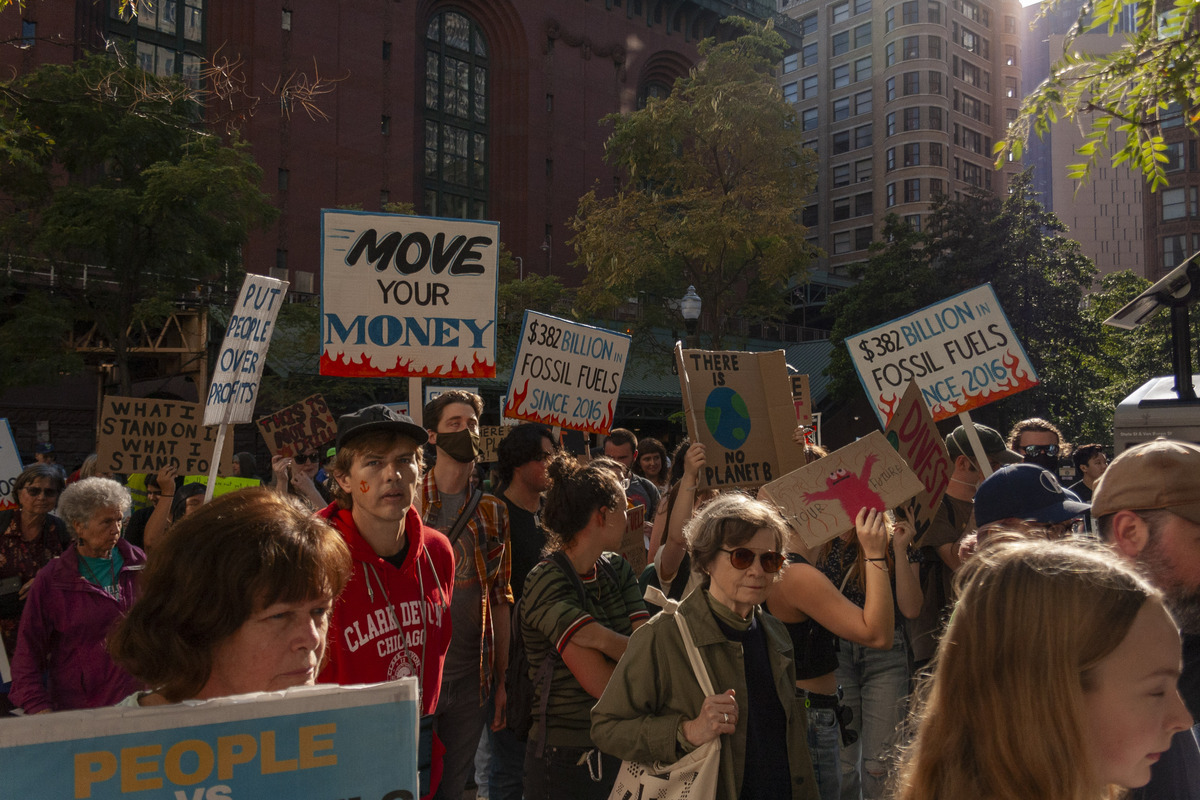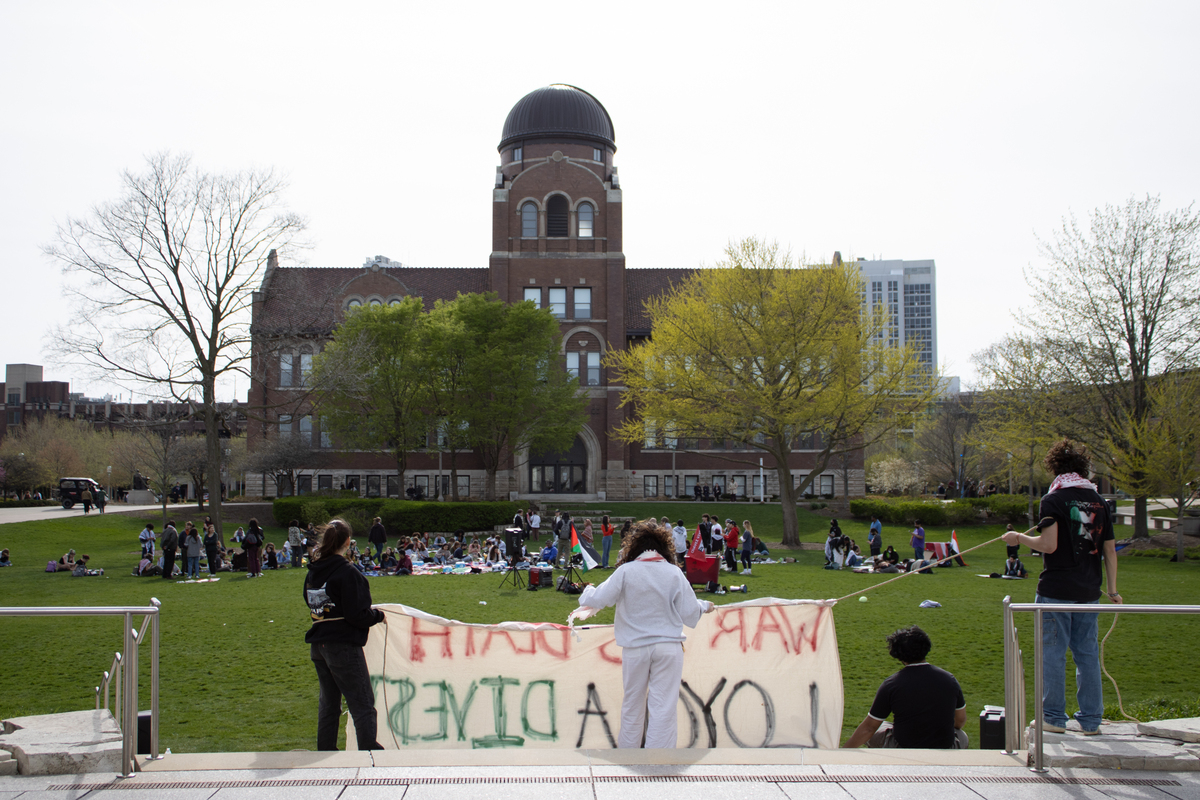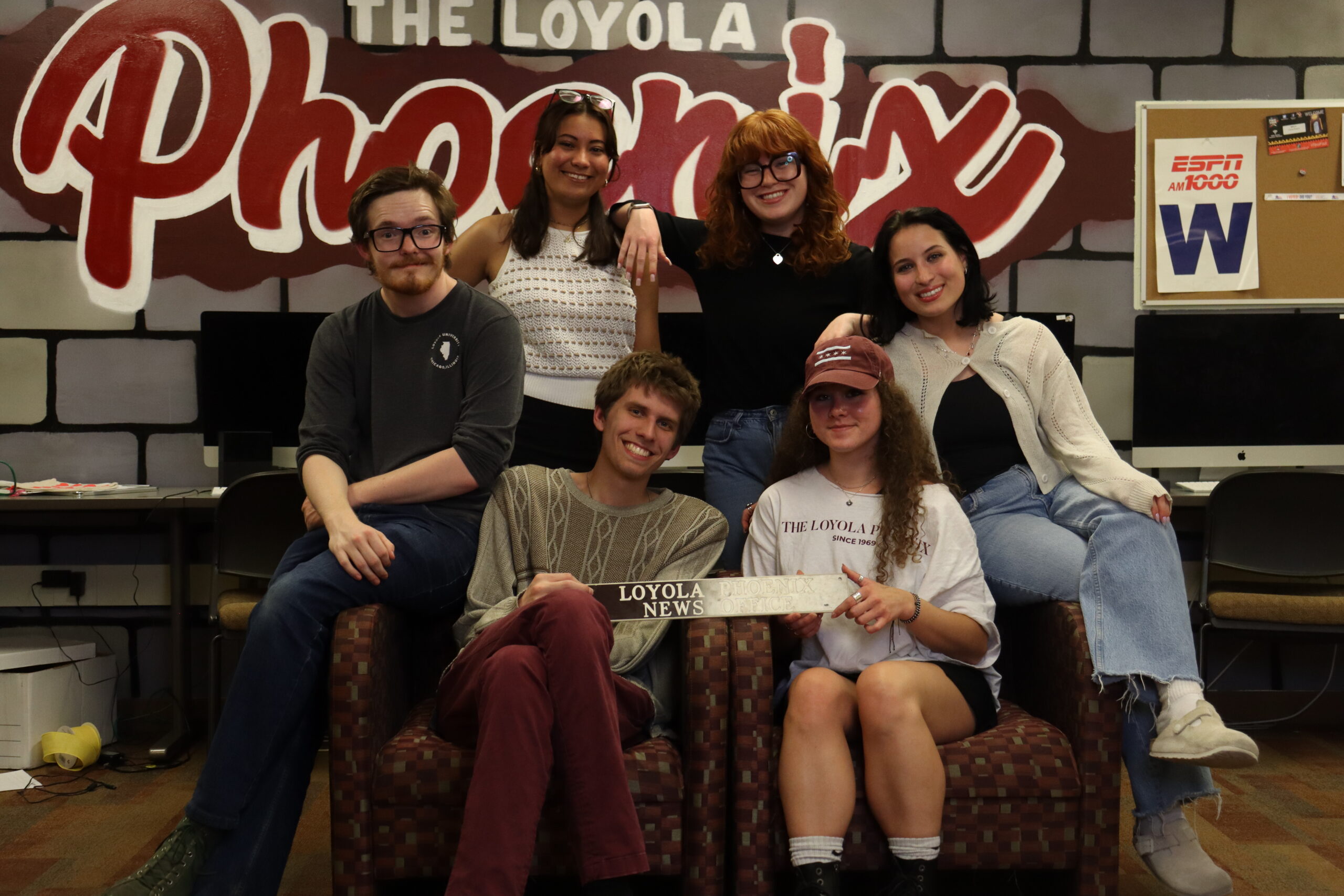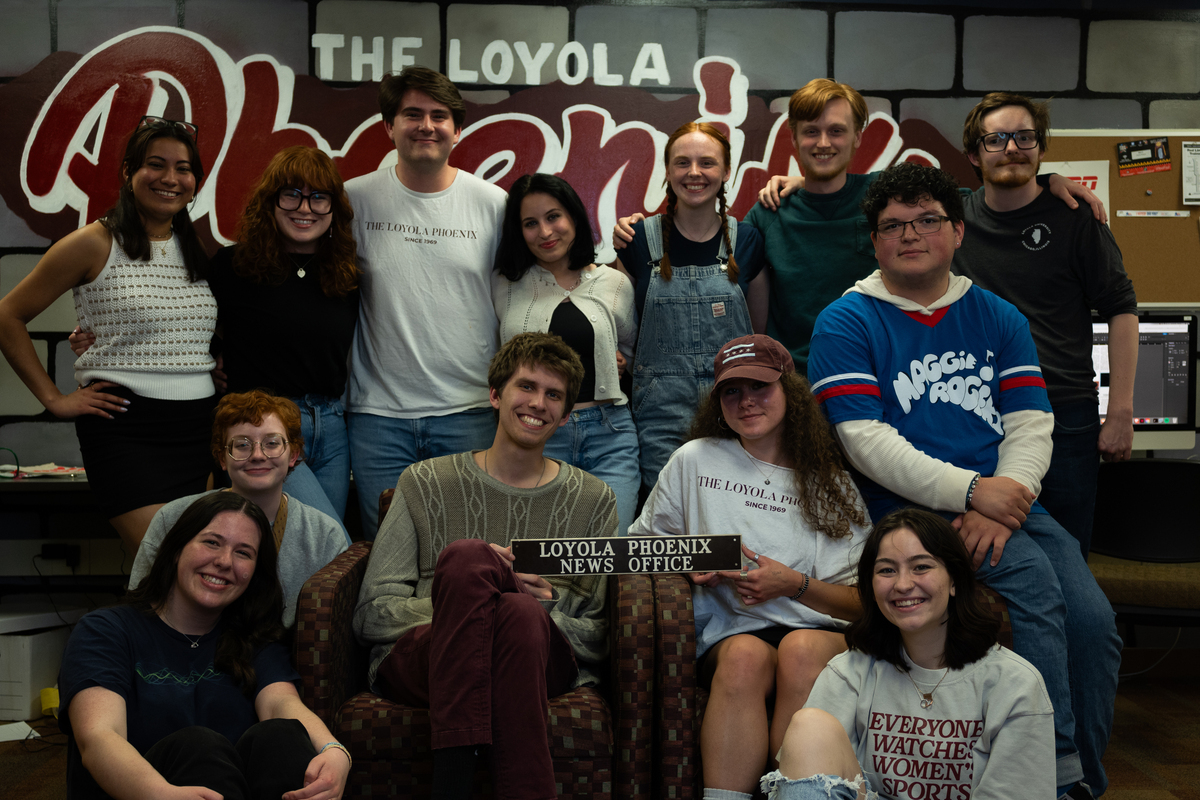More relevant than ever is the burning question posed in Macklemore’s 2012 hit “Thrift Shop”: “Hey, Macklemore. Can we go thrift shopping?” Loyola students find their desire to shop sustainably often clashes with the harsh reality of being a college student on a budget. With sustainable brands increasing prices and fast fashion becoming astoundingly affordable, …
A Fashion Revolution: Loyola Students Fight Fast Fashion

More relevant than ever is the burning question posed in Macklemore’s 2012 hit “Thrift Shop”: “Hey, Macklemore. Can we go thrift shopping?”
Loyola students find their desire to shop sustainably often clashes with the harsh reality of being a college student on a budget. With sustainable brands increasing prices and fast fashion becoming astoundingly affordable, it can be hard to know which is the right path to follow — but why should young adults have to choose between saving the planet and buying a new outfit?
Professor Sarah Ku, assistant professor of sustainable business management, spoke to the economic, social and environmental components of sustainability in business. Sustainability often comes with a price point, said Ku, which can make shopping ethically difficult for students on a budget.
“It’s a real issue of social justice where if the only products that are within a socioeconomic reach are non-renewable, coming from poor energy sources or poor labor practices, that’s really unfair,” Ku said. “But what are you as the individual consumer supposed to do?”
Consumers tend to prioritize budget-friendly options for clothing, said Ku. First-year theater major Dean Morgan said fast fashion presents the simplest alternative for those in lower income brackets.
“Fashion isn’t the most accessible thing,” Morgan, 18, said. “Sometimes fast fashion is what you can afford.”
While searching for pieces to add to his closet, Morgan said he prefers to buy from companies that have an ethical, sustainable background. The fashion major has recently begun learning how to thrift to try and repurpose old clothes. He is not the only student beginning to recognize the importance of sustainability in fashion.
Students in Brother Jose Martin Montoya Dura’s environmental sustainability class have recently begun learning about the ins and outs of the fashion industry. Montoya, lecturer in environmental sustainability at Loyola, said he is teaching his students to question where and how their clothes are being produced.
Montoya’s student Dasha Musil, a senior international business major, said her eyes were opened by an Alex James film, “Slowing Down Fast Fashion,” which the class watched during a lesson on the unethical practices of the fashion industry.
Students saw the people behind the clothing: the faces of men, women and children forced to work in horrifying conditions for little pay.
After displaying this harsh reality, the film features a plethora of sustainable options to avoid supporting the corrupt business of fast fashion. Thrifting is among the most popular alternatives featured in the film, something some Loyola students have already been heavily partaking in.
“Oftentimes we associate sustainability with [being] expensive, but it doesn’t have to be that way,” Ku said.
Thrifting and upcycling are low-cost alternatives to shopping for new items to add to your closet.
Upcycling involves creatively reusing clothes like hand-painting new designs on old jeans. Thrifting is shopping for used clothes and giving them a new life. Sustainable fashion practices such as these allow students to express themselves through their clothing without breaking the bank.
Sydney Shimizu, a first-year public health major, enjoys sifting through Goodwill bins to rescue closet castaways. Her eclectic style can be attributed to her open-mindedness about finding clothes from stores not featured on Michigan Avenue.
There are no limits to Shimizu’s creativity when it comes to picking out her next outfit.
“How I dress changes all the time,” the 18-year-old said. “I’m like, ‘Who am I? Who am I calling out to right now? Who am I being like today?’ It could be anything, that’s the fun thing.”
Shimizu is not the only student at Loyola experimenting with fashion. First-year Stella Jensen said she tends to shop secondhand instead of buying new because of the environmental benefits and the ability to find clothing that’s not mainstream.
Having the ability to thrift and find unique pieces is something Jenson really enjoys. The communication studies major said her approach to her personal style is less trend-focused than others.
“I try thinking about fashion as more of an art project than trying to keep up with trends,” Jensen said.
Both Shimizu and Jensen use thrifting and shopping second hand as a creative outlet to repurpose clothes and make their style distinctive.
Creativity like this will be essential for harvesting untapped potential in materials deemed as “waste,” according to Ku. Loyola’s own Paul Schnell, a senior advertising and public relations major, has a creative solution to an annual problem — the halloween costume.
Schnell said he wants to utilize the outreach of social media and create a campaign to negate the habit of single-use clothing pieces through a Halloween challenge at Loyola.
“I would like to spread awareness about fast fashion and our own consumption while at the same time, like, develop action throughout our campus,” Schnell said. “By the end of October, people will feel more inclined, during a time of the year where you buy a bunch of clothes and costumes, to minimize that consumption,” said Schnell.
Shopping sustainability requires a change in culture and habits. Creating a world that prioritizes the minimization of consumption, the longevity of pieces and the ethical background of clothing is key to a sustainable future. From the classroom, to thrifting, to campus wide initiatives, Loyola students are creating a world where sustainable fashion is the only answer.










